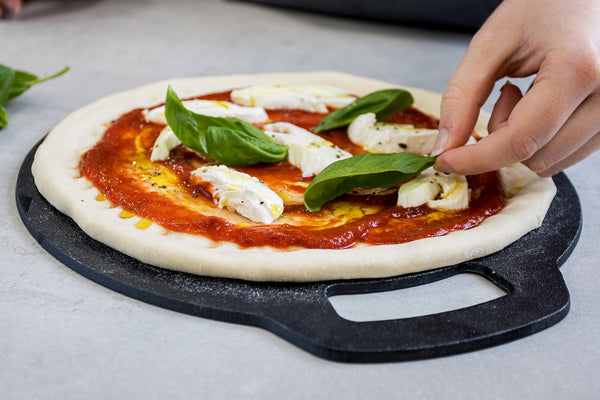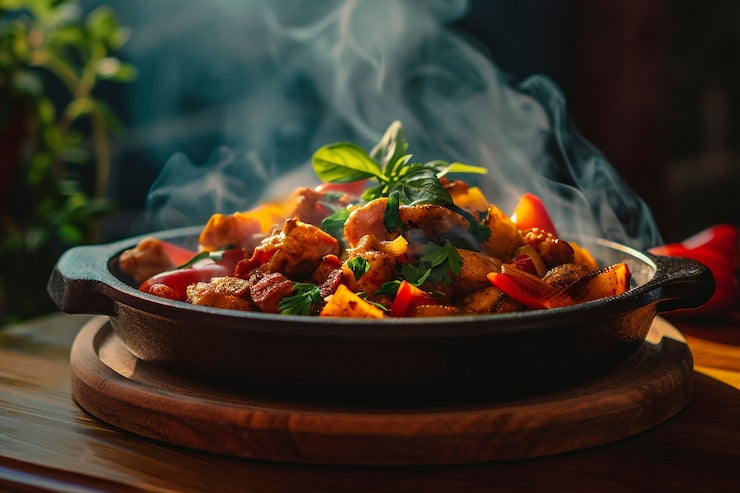In the world of professional kitchens, achieving the perfect thin crust pizza on a baking stone is a celebrated culinary art. For kitchen professionals, this technique transforms humble ingredients into gourmet delicacies. Its not just about cooking; its about crafting a texture thats both crispy and airy, setting a high bar in any pizzeria or fine-dining establishment.

Understanding the Baking Stone
The baking stone, also known as a pizza stone, serves as a valuable tool in professional kitchens. Made from ceramic, cordierite, or clay, its ability to absorb and evenly distribute heat offers a distinct advantage in pizza making. The dough crisps up beautifully at the bottom, while the toppings cook evenly on top. Learn more about choosing the best baking stone for bread at Best Baking Stone.
Crafting the Perfect Thin Crust Pizza
Creating thin crust pizza on a baking stone requires precise preparation. Start with a well-hydrated dough. The right balance of flour and water will ensure tenderness and elasticity key aspects of a quality thin crust. As you prepare, consider standard techniques like scoring bread on a baking stone to help release steam during the baking process. Visit our How to Score for more details.
Tips for the Perfect Bake
- Preheat the Baking Stone: Allowing the stone to reach the desired temperature (typically around 500-550 degrees Fahrenheit) before baking is essential. This preheating process can take up to an hour.
- Use Cornmeal or Semolina: Dust your peel with cornmeal or semolina to prevent the dough from sticking when sliding it onto the hot stone. Proper dusting can simplify the transition from counter to stone. Discover why this is a must-do for perfect baking from our Using Cornmeal guide.
- Observe the Bake: Thin crust pizzas cook quickly. Keep an eye on the bake; usually, a perfect bake takes 8-10 minutes.
Exploring Toppings and Techniques
The advantage of cooking a thin crust pizza on a baking stone is versatility. You can experiment with classical Margherita variants, spicy pepperoni, or opt for exotic ingredient combinations that push the boundaries of pizza artistry. These tips from Real Simple can enhance your crust game.
Enhancing Flavor
Consider enhancing flavors by incorporating fresh herbs or different cheeses that complement the toppings. The key is balanceensuring that vibrant toppings dont overshadow the delicate crust you've so carefully baked.
Overcoming Common Challenges
One common challenge in professional kitchens is ensuring even cooking. Learn more about these challenges from this ultimate guide. If the bottom cooks faster than the top, consider adjusting the oven rack or reducing the oven temperature slightly.
Dealing with Sticking Issues
If your dough sticks, it usually indicates a problem with tool preparation or dough hydration. Proper dusting and ensuring a well-floured dough can alleviate this issue.

FAQ
- What temperature should I preheat my baking stone for thin crust pizza? - Preheat your baking stone to about 500-550 degrees Fahrenheit to ensure even cooking.
- How do I prevent my dough from sticking to the stone? - Use cornmeal or semolina on your peel to slide the pizza easily onto the stone.
- What if my crust doesnt get crispy? - Ensure your stone is preheated adequately and avoid overcrowding your pizza with toppings to ensure proper heat distribution.
This article contains affiliate links. We may earn a commission at no extra cost to you.





Leave a comment
This site is protected by hCaptcha and the hCaptcha Privacy Policy and Terms of Service apply.